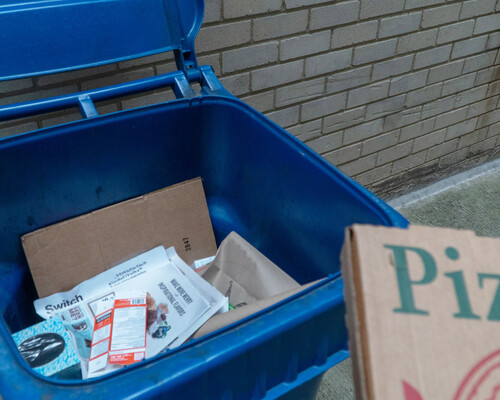Why You Shouldn't Go Completely Paperless
The notion of going paperless is popular – from digital documents to e-signatures and e-books. Going paperless may not always be the best solution. Paper continues to offer numerous advantages as a medium of choice for reading and writing. It’s also secure and provides an accessible option.
There are benefits to taking a balanced approach between digital and paper-based options. Let's explore why.

CONNECTION AND RETENTION
Paper provides a tangible connection. It also helps you learn and retain information better.
Studies show reading on paper helps readers better comprehend information. So does taking notes on paper.
Paper is an invaluable tool for learning, brainstorming and creative thinking.
SECURITY AND RELIABILITY
While digital storage is convenient, it is not without cyber threats and vulnerabilities.
Cybersecurity risks and data breaches continue to be a growing concern.
Physical copies can help ensure the safety and reliability of critical information, providing peace of mind.
Paper-based records offer an alternative to reduce digital theft, hacking or accidental data loss.
ACCESSIBILITY FOR ALL
The digital divide persists in America. The Federal Communications Commission estimates 25% of rural Americans do not have access to broadband.
By going paperless, or imposing fees to choose paper, we risk excluding people from essential information and services like prescription information or Social Security benefits.
Printed materials offer accessible options for those with disabilities like vision impairments or dyslexia.
Paper-based materials ensure everyone has access to crucial documents. This includes government forms, legal contracts and healthcare records.
Providing both digital and paper options promote inclusivity and accessibility.
ENVIRONMENTAL IMPACT OF PAPER
Paper is a sustainable option for modern life. And the paper industry is an advocate for sustainable forestry. Through our Better Practices, Better Planet 2030 goals, our members are reducing emissions, managing water resources and increasing energy efficiency.
The paper and wood products industry was among the first manufacturing industries to take voluntary action to reduce greenhouse gas (GHG) emissions.
AF&PA members are committed to reducing GHG emissions by 50% by 2030. Between 2005 and 2022, combined Scope 1 and 2 emissions for AF&PA member U.S. pulp and paper mills decreased by 36%.
Paper products are made from renewable resources – trees and recycled paper. About 80% of U.S. paper mills use some recycled paper fiber to make renewable products like office paper, newspaper, books and magazines.
Even with digitization, it’s important to recognize the enduring value of paper.
A balanced approach takes advantage of paper-based options.

How Do You Recycle Shredded Paper?
Can you recycle shredded paper? Yes, but shredding it makes the paper less likely to be recycled if small bits of paper aren't properly contained. Only shred things with sensitive information to protect your privacy.

Paper Products and Materials Widely Accepted for Recycling
The vast majority of Americans have access to a community paper recycling program. Items like pizza boxes, cardboard boxes and paper bags are widely collected for recycling in the United States.

Is the Paper Industry Sustainable?
The answer is yes! Your essential paper products are sustainable. The paper industry is a leader in sustainability, taking steps to reduce GHG emissions, increase energy efficiency and advance sustainable forest management.
